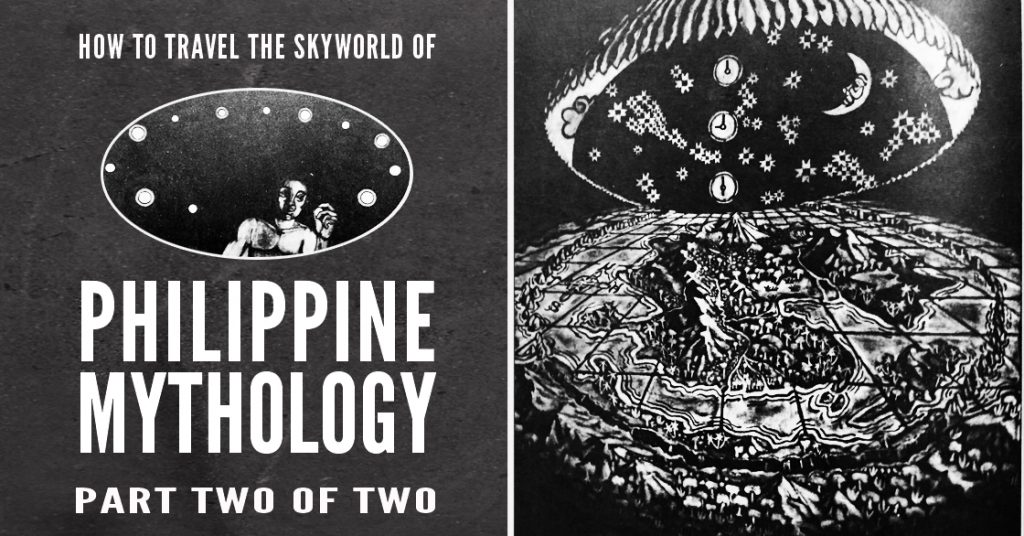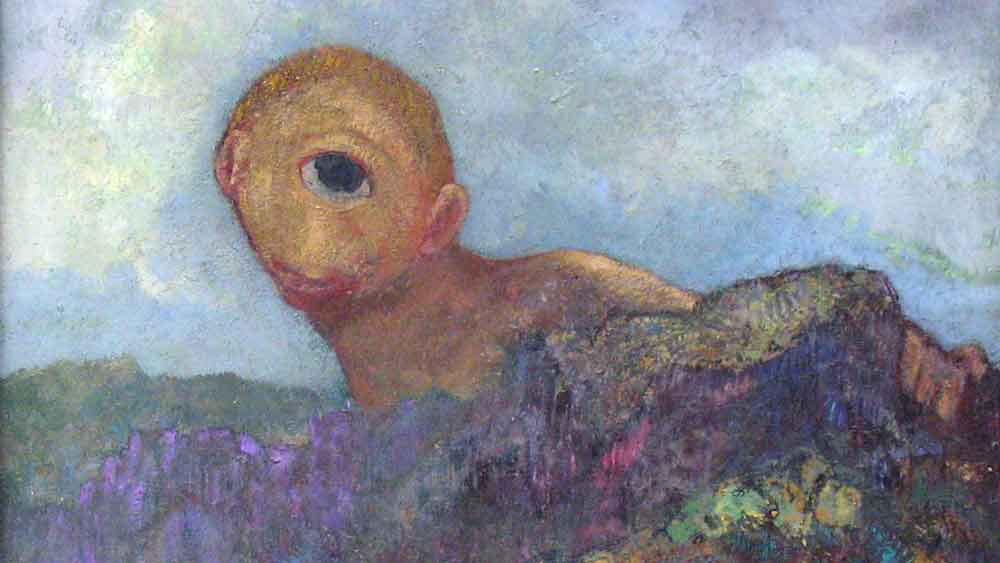People have varying visions of paradise influenced by both their faith and their imagination. The most common constructed mental view of this is an ethereal, or even a physical plane, located somewhere in the sky and ruled by an Almighty God with his choirs of brilliant angels. It houses all the beautiful and good things in this world; overflowing with bliss that makes it the kind of place you want to spend eternity.
But ‘heaven’, or skyworld, according to early Filipinos might be just a little stranger compared to our usual vision of paradise. You might even ponder what you should do if at the end of it all you found yourself walking into an ancient paradise with the older and unknown gods of our ancestors.
Well, as with our previous article dealing with the underworld of early Philippine beliefs, there are also ‘guides’ based on the collective lore of various ethnic tribes in the Philippines that will help us explore, and ultimately survive, the skyworld. Let’s get right into how mortals like us can enter the divine abode of the deities who once oversaw all that we were.
So Near Yet So Far
Just how far is the distance between the skyworld and earth? Will it cover miles or perhaps light years before someone can step on its sacred ground? What if I told you that the ‘heaven’ of early Filipinos was so near the earth that people actually had to dig holes in the ground to protect themselves from the blazing heat of its sun?
Different myths portrays a “low lying sky” that due to various doings of people, started to raise itself higher and higher until it reached its current distance today. According to Dean S. Fansler who authored the book “Filipino Popular Tales”, an Ilonggo myth tells the tale of a deity in the sky who was wounded from the spear thrown by a drunken warrior during a feast. This caused the other deities to elevate the sky in order to save themselves from such an incident.
In another myth documented by Laura Watson Benedict, who wrote the “A Study Of Bagobo Ceremonial, Magic and Myth”, the Bagobos have the old woman Tuglibong to thank for the higher sky. She used her gutsy Lola attitude to rebuke the sky, telling it to go higher so her people had room to pound their rice on their mortar. The sky obeyed the old woman and went up until it was beyond the reach of any person.
The Ilokano myth of the giant Angngalo on the other hand explains that the gentle Cyclopes lifted the sky with his sheer strength during the period he was shaping and creating the world.
Now that the sky is far away from our human grasp, what is the process to visit it?
Into the Jaws of the Horizon
If you are the type of person who is a certified thrill seeker and adrenaline junkie there is an extreme method to enter the skyworld. In Bagobo lore, the edge of the horizon is the only single entry point to the skyworld. The catch however is that you need to be as quick, for the entrance is filled with huge sharp teeth that begin to clamp open and shut repeatedly when someone approaches. Yes, you need to literally time your sprint and jump past the massive jaws before you can enter the skyworld. If your timing is off, you will be ground to pieces.
In Kalinga stories, things are a bit easier for there are no jaws, but a three meter thick plate that opens itself once a day for a very short time. Only people nimble enough to travel to its far Eastern location at the sky’s cupola will be able to enter. In the Ifugao tales documented by Morice Vanoverbergh, if you would like to travel to the skyworld abode to consult the culture hero Lumawig about your problems, you will need to pass the gap where the sky and earth meet. Sometimes it is open, and sometimes it is not. When the pass is too narrow, you may use stones and trees to create a gap – stories say that people would send their dogs first to ensure it is safe, although the The Philippine Animal Welfare Society (PAWS) might have something to say about that today. The stones and trees are eventually crushed by the two bodies.
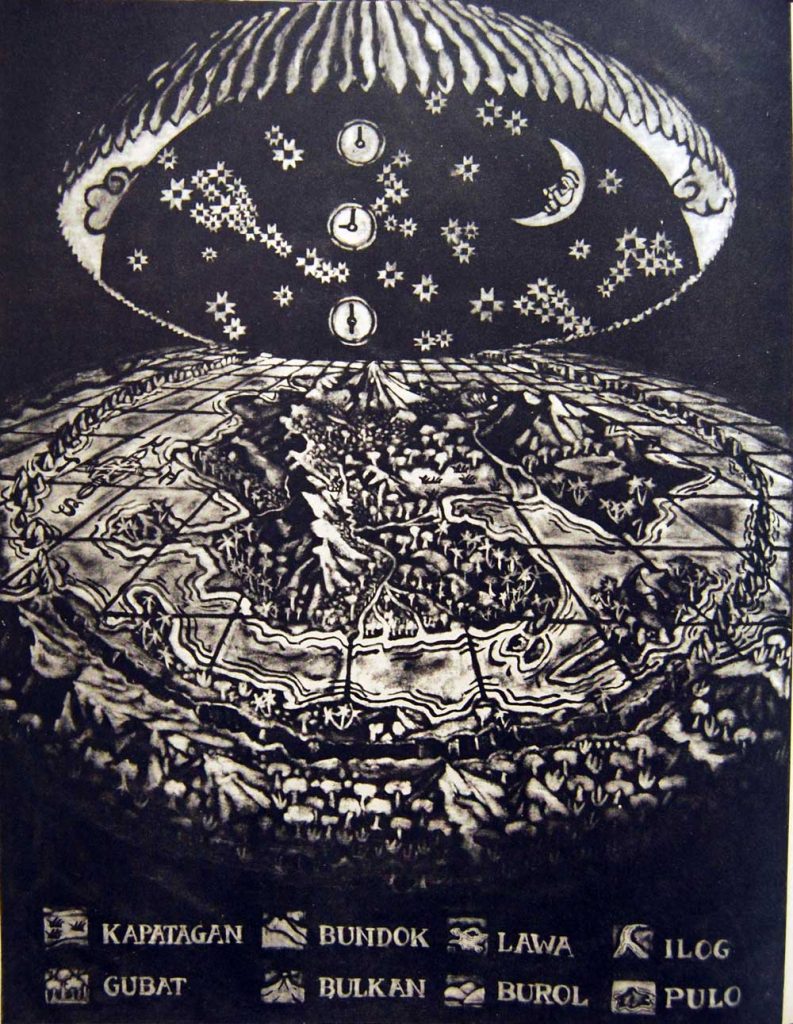
Finding the Hole or Riding the Boat
If you are faint of heart and don’t want to chance the “jaws of the horizon”, there are easier, alternative routes you can try for your safety and convenience. First is to catch a ride on the magical Salimbal of the hero Agyu from Olaging Epic of the Bukidnon people. The Salimbal is a ship with the ability to sail through the sky and Agyu’s people used this vehicle to reach the skyworld.
If you don’t fancy a ride on a flying ship, you can try to find the mysterious hole in the sky from where the citizens of the skyworld descend to earth. In Bisayan tales, arrows shot by the heavenly hunter Ukinirot created this hole. Of course this Bisayan tale about the hole in the sky may simply lead you to the moon. You see the people of the skyworld descended to earth using this hole, until a fat woman got stuck, where she remains to this day, “mooning” us from above.
In a Kanaka-ey tale, the gardener Timungan created this hole from digging up a rather large tuber (sweet potato) in his skyworld garden.
This hole allows both the people of earth and the citizens of skyworld to enter in and out of each of their worlds. This can be done through different means, like climbing vines from the skyworld, riding a special basket such as the one used by the Tinguian star goddess, Gaygayoma, to fetch her mortal lover, Aponitolaue. Ukinirot and his friends used a rope made from bird feathers to climb the earth.
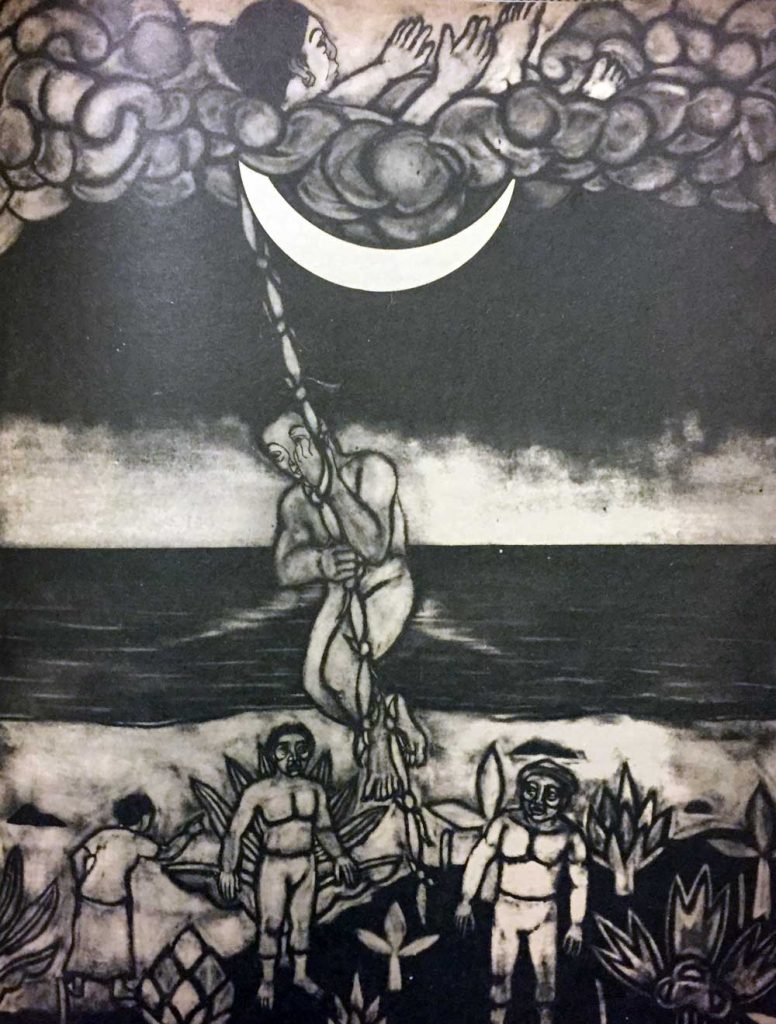
Stairway to Heaven
Going to the skyworld used to be as easy as climbing a set of stairs. According to Manobo myth, the gods once built stairs for mortals to reach the sky and commune with them. Unfortunately, a disrespectful climber named Puhak defecated on them and the stairway was permanently closed.
Despite the loss of the said stairway, there are “pillars of the world” from Panay lore in the form of mountains that serve as supporting structures of the heaven. These mountains are also another means to enter the skyworld. Many believe that the zenith of mountains are the dwelling place of gods and other spirits – such as the god Suku from Mount Arayat, or Maria Makiling who is the caretaker of the mountain bearing the same name.
According to Alicia Magos, in her dissertation “The ideological Basis and Social Context of Ma-aram Practice in a Kiniray-a Society”, Babaylans used to conduct their rituals at the top of mountains to easily appease and commune with their gods. This could be the reason why some people consider mountains as sacred sites, such as Mount Banahaw which up until now is still visited by many pilgrims. There are also plenty of cults and religious groups who have established their belief on the said mountain.
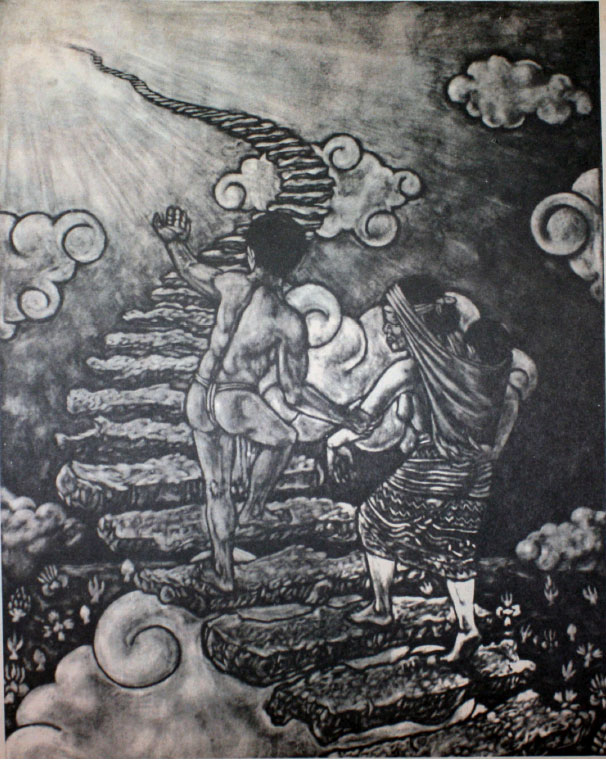
How Many Layers is Your Heaven?
Have you ever encountered the term “seventh heaven”? It’s often refereed to as a state of extreme happiness and joy – I’m in seventh heaven”.
In religious or mythological cosmology, the seven heavens refer to the seven divisions of the Heaven, the abode of immortal beings, or the visible sky, the expanse containing the Sun, Moon and the stars. This concept dates back to ancient Mesopotamian religions and can be found in the Abrahamic religions such as Islam, Judaism and Christianity, a similar concept is also found in some Indian religions such as Hinduism. Some of these traditions, including Jainism, also have a concept of seven earths or seven underworlds.
Our ancestors, and even current Filipino ethnic groups, affirm the said term with their belief that the skyworld is a place made up of various layers. Some, like the Ifugao, see the skyworld as a four layered plane. These layers are called Hudog, Luktag, Hubulan and Kabuniyan. Each of these have a similar appearance wherein their surface is topped with earthen materials and gardens while their bottom part is made from smooth blue stones.
To the Bagobos however, skyworld is not 4, nor 7, but 9 layers and each of these layers are presided by a family of deities. You might want to know who they are if you find yourself traversing in the Bagobo afterlife. The first heaven is ruled by Lumabat, the first man who tasted divinity after he made history as the first mortal to successfully pass through the jaws of the horizon that led to the skyworld. The second layer is led by Sala-miawan, who owned the shrine of the sky -also known as Tiambara ka Langit. The third layer is presided over by Ubnuling, who is actually the father of the deity that rules the ninth layer. Next is the maiden goddess Tiun of the fourth heaven and Biatodanof of the fifth heaven who happens to be the wife of Sala-miawan. The sixth layer’s deity has a very unique name that when translated gives us a clue of how marvelous this goddess is. She is known as Bia-ka-pusudan-langit (Lady of the Navel of Heaven). Kadeyuna is the queen of the seventh heaven and the sister of the goddess Tiun as well as the wife of Malaki Lunsud, who happens to be the king of the eighth layer of skyworld and one of the heroes told in one of the epic romantic tales of the Bagobo. Last but not the least is the ninth layer which is reigned over by the god Pangulili.
A Many Layered Universe
In some other myths, not just heaven but the whole universe is composed of 7 layers. Let’s take a look at the sights you might encounter while voyaging through the seven layers of the Bisayan universe. If you were to start at the first layer, there may be some disappointment as it contains nothing. The second layer, or Tubignon is made up of water. Spirits that inhabit the bottom of the seas and oceans reside here. The third layer, Idalmunon (dalum for deep) is located in the bowels of the earth and is inhabited by underground spirits. The fourth layer, Lupan-on is the earth we live in. This space is shared by numerous beings, including the engkantos and diwata we are supposed to co-exist with. Since they are invisible, we often take over their space which causes the ailments we sometimes are afflicted with. The atmosphere directly above the earth we live in is known as Kahanginan. Two denizens of this region are Bentohangin, the flying horse that is half human, and Kubot which is a huge bird that looks like a flying umbrella. Ibabaw-non is the sixth layer where human mediums such as the babaylan reside. This allows them to intercede for their people with the spirits. The abode of the creator Maka-ako, is known as Langit-non and is the final layer in the 7 layer universe.
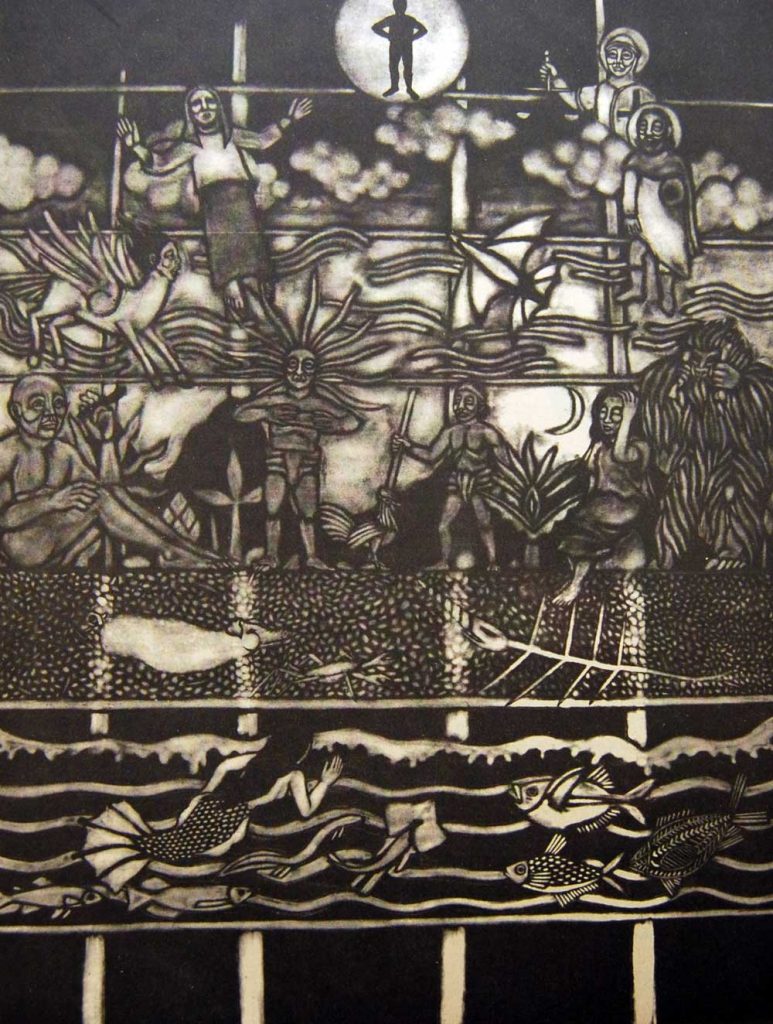
Pack your Bags…and your Soul
That ends our strange, but hopefully eye opening, journey to the land of the dead to the highest peak of the skyworld, where gods and goddess watch over us. The truth is, these are just few versions of our own cosmology taken from selected myths and lore from ethnic groups around the Philippines. Knowing how diverse our culture is, chances are there are a lot more visions of heaven and underworld that can be explored from the perspective of our ancestors. While the multitude of ancient and current beliefs from the Philippines may be confusing, it is hard not to enjoy the creative and imaginative myths that accompany them. One truth starts to emerge as we strip back the foreign influences of our pagan beginnings – earth’s miseries and disappointments are enough punishment for any shortcomings we may have. Regardless of the region you come from, ethnic group, class, or transgressions, there is an opportunity to enter into the ‘paradise’ of your beliefs.
Sources:
The Soul Book: Introduction to Philippine Pagan Religion, Demitrio, Fernando, Zialcita, 1991 GCF Books
A Study of Bagobo Ceremonial, Magic and Myth by Laura Watson Benedict
ALSO READ: How to Travel the Underworld of Philippine Mythology
Currently collecting books (fiction and non-fiction) involving Philippine mythology and folklore. His favorite lower mythological creature is the Bakunawa because he too is curious what the moon or sun taste like.

